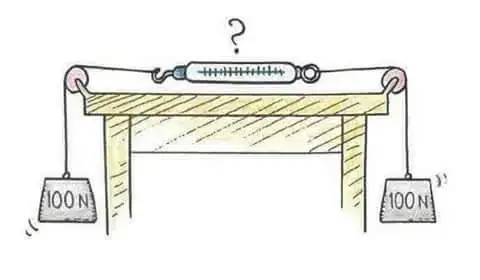
If $g=10 N/kg$ , what will show the Scales?
Yes, I know this is a very simple problem. But, I am stuck. $$P=mg \Rightarrow m=\frac{100N+100N}{10N/kg}=20 kg .$$
But, I'm worried about this answer. What's the difference between hand holding the scales and putting them on the table? I think, if the Scales is captured manually, the force applied from above should be meaningless. And answer must be $m=10 kg.$ Is it correct?